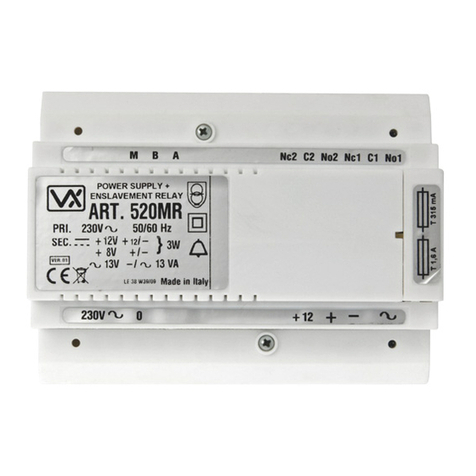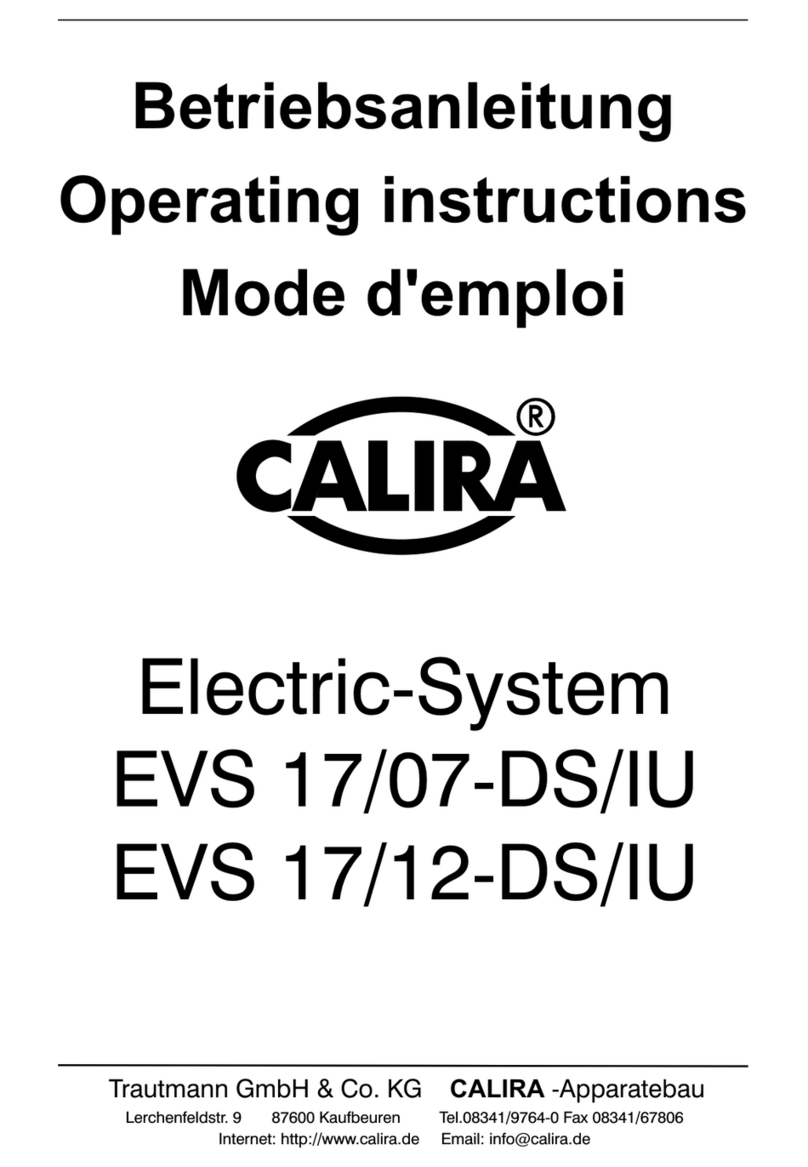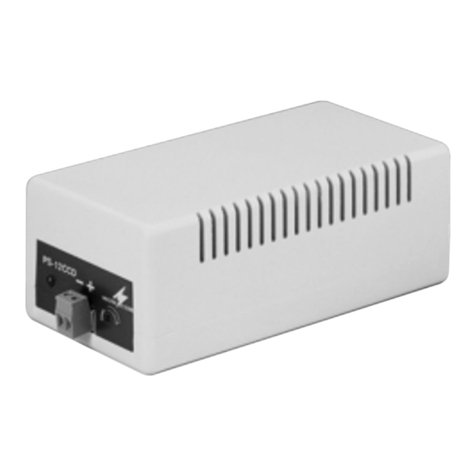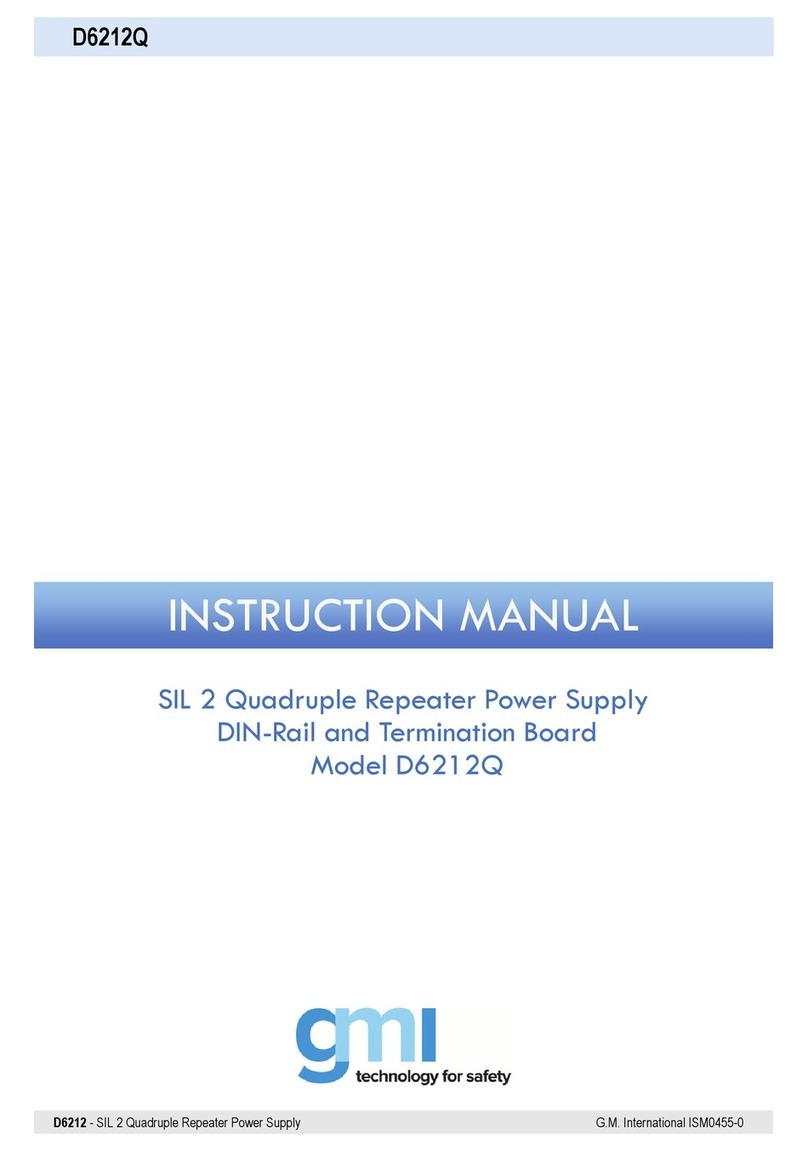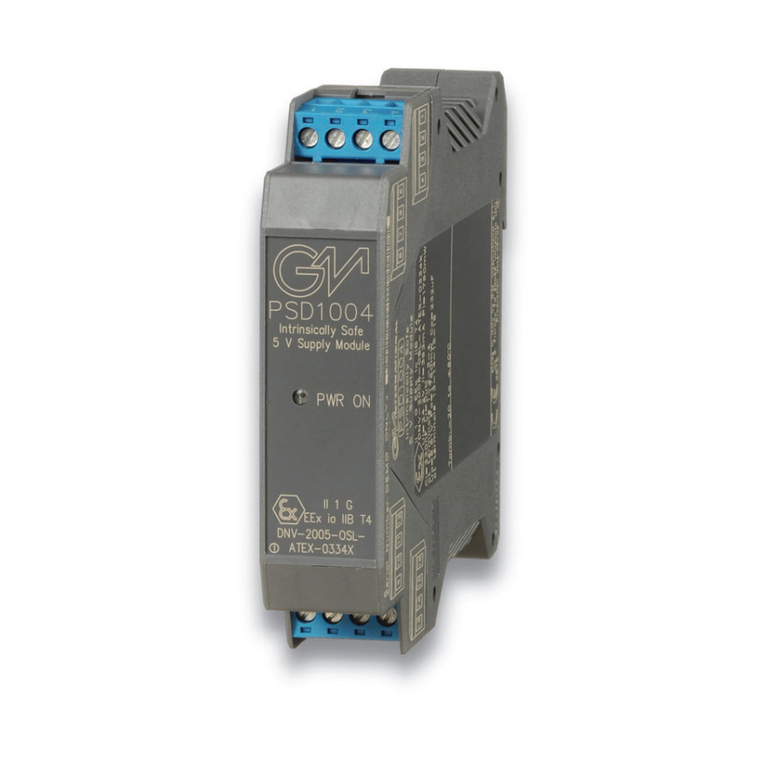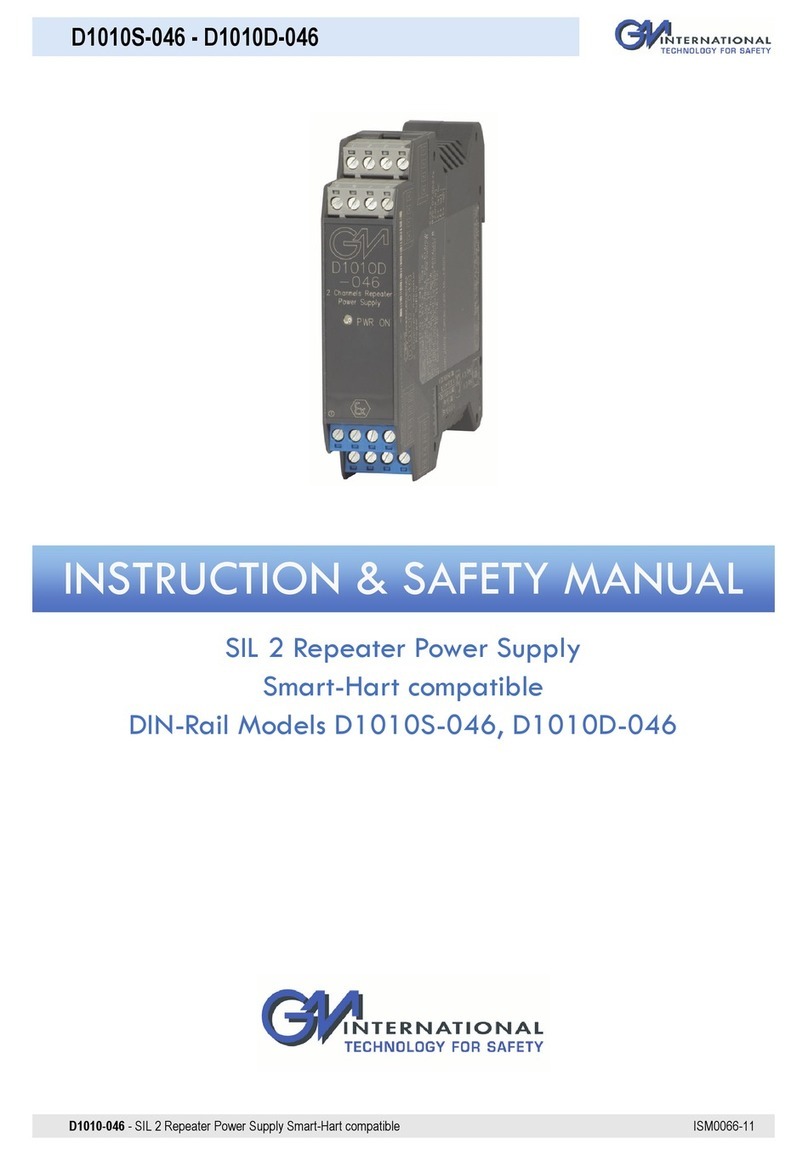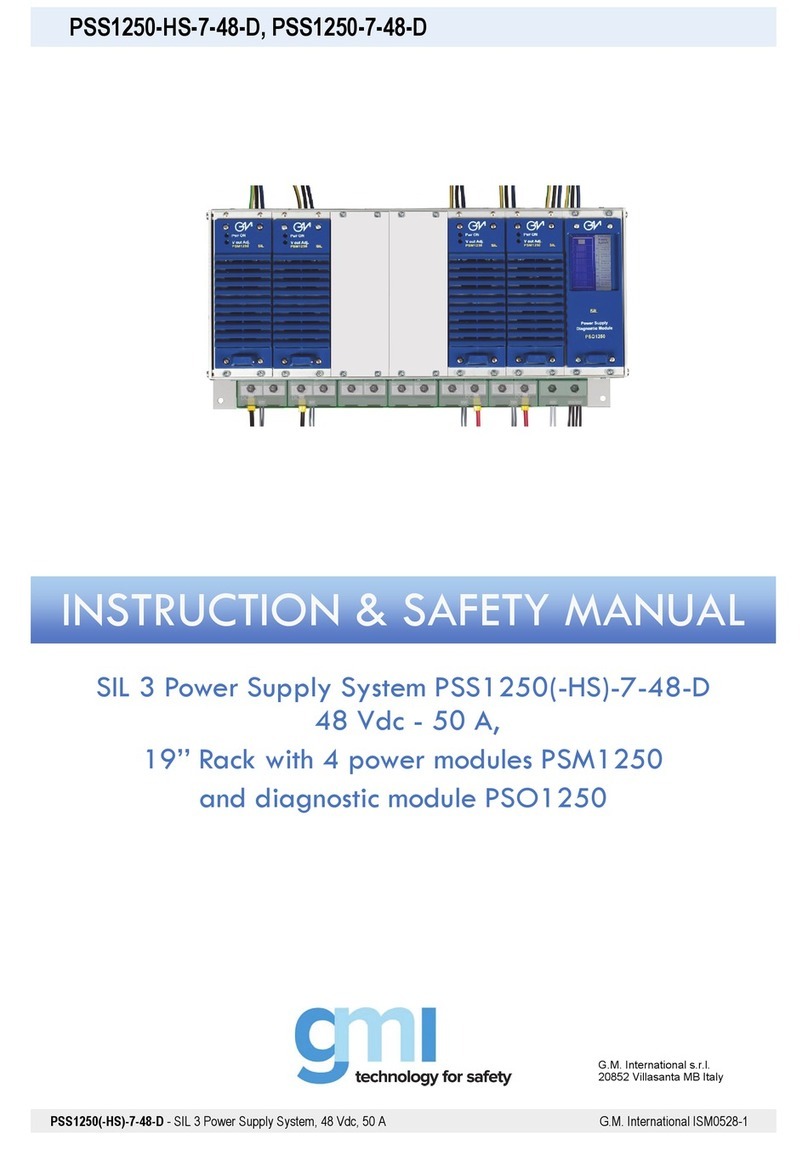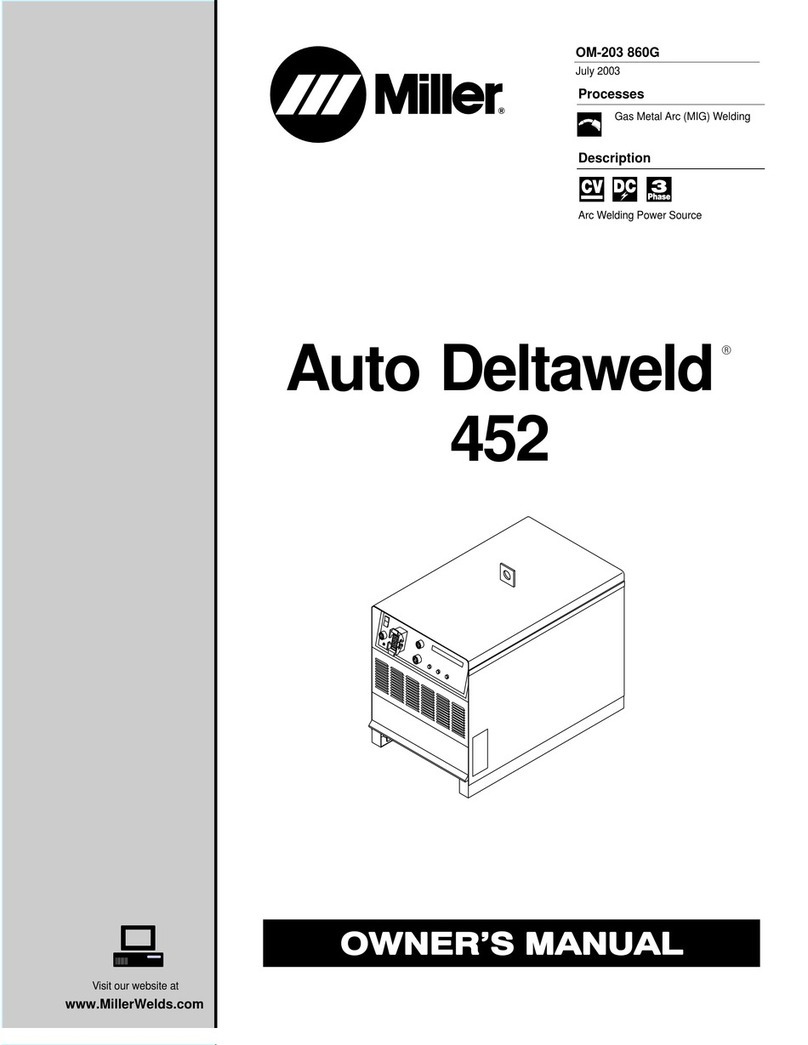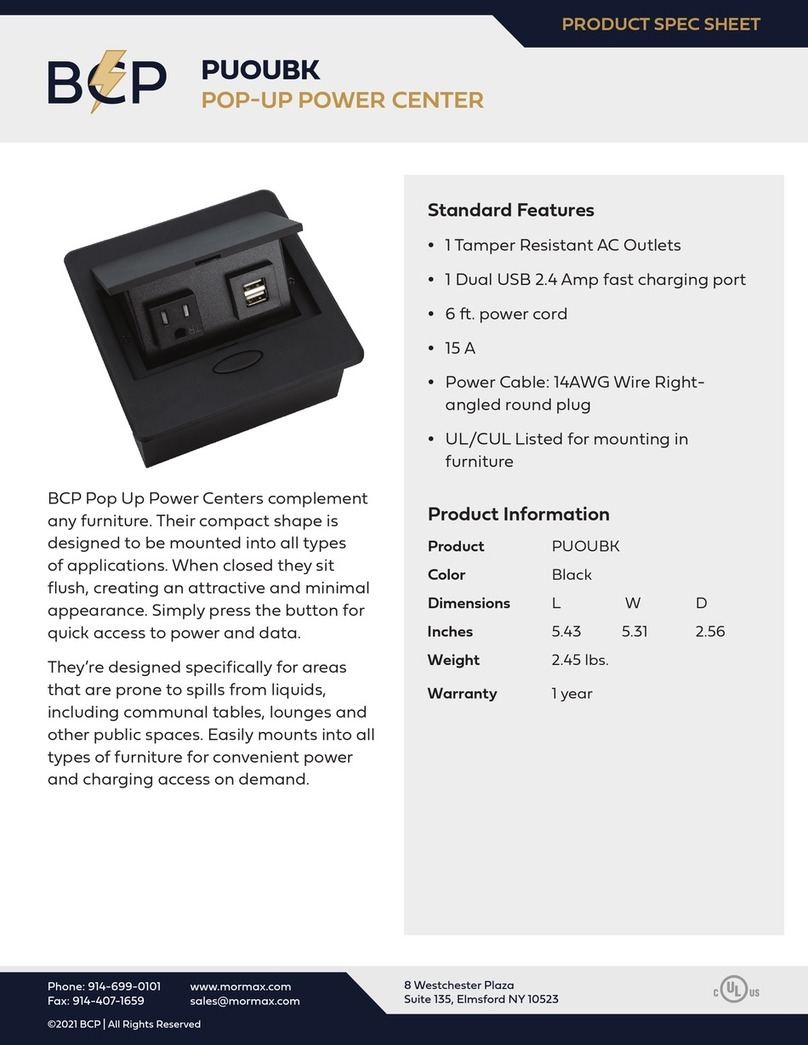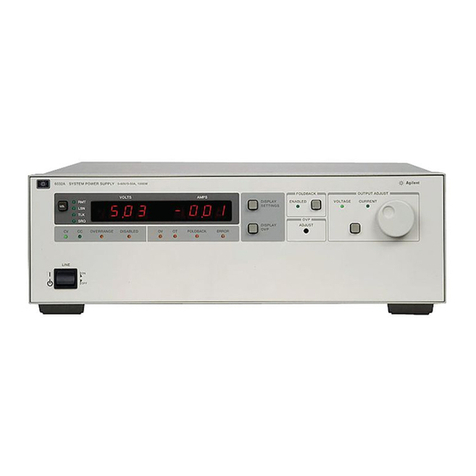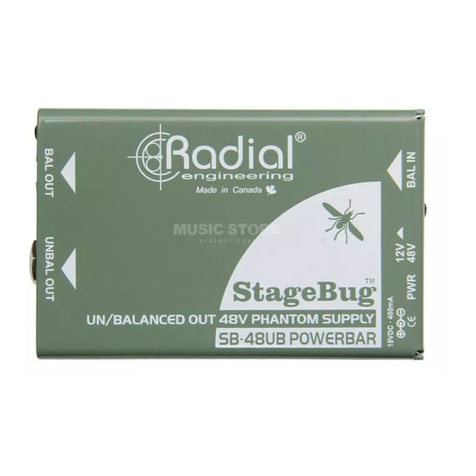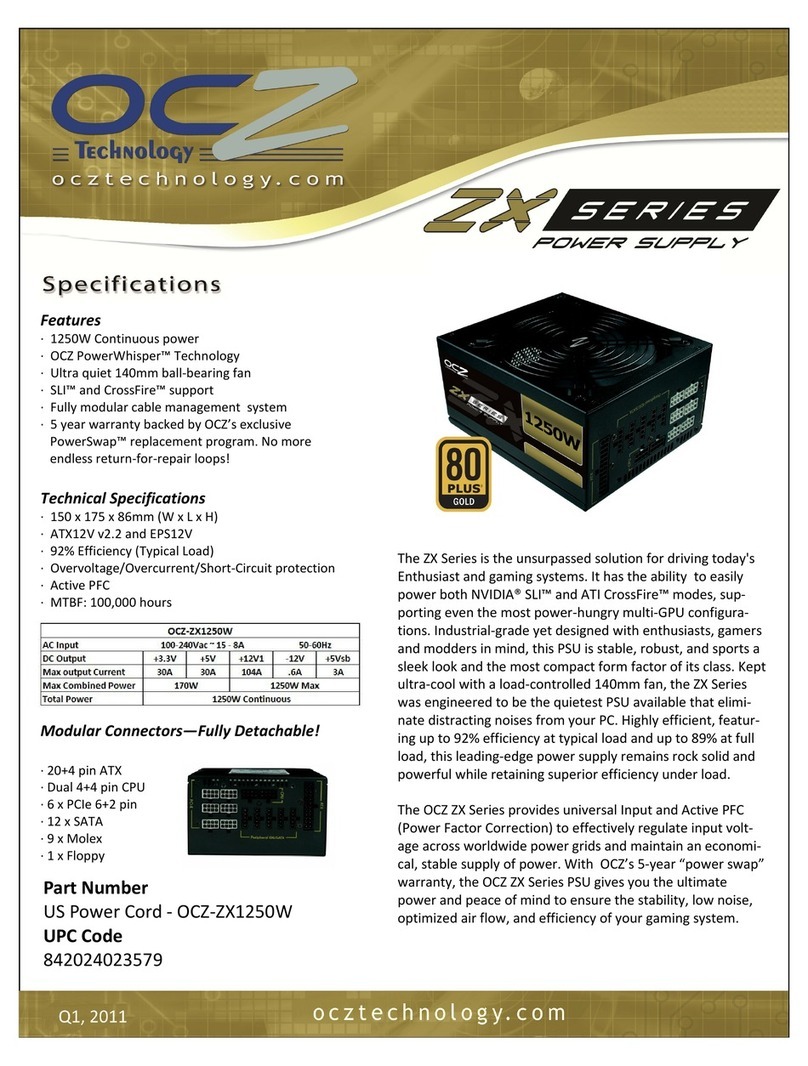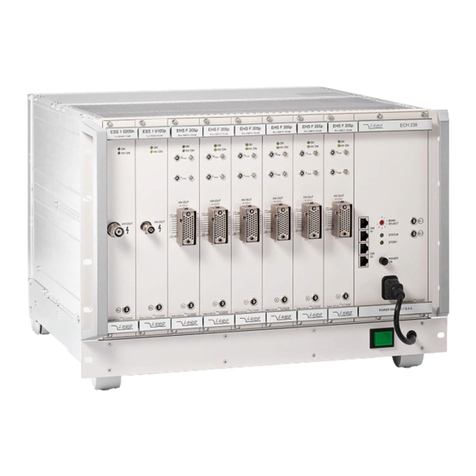
7
PSD5201 - SIL 3 Power Supply for Hazardous Area EquipmentG.M. International ISM0186-3
The PSD5201 series devices are isolated Intrinsically Safe Associated Apparatus installed into standard EN50022 T35 DIN-Rail located in Safe Area or Zone 2, Group IIB, Temperature
T4, Hazardous Area (according to EN/IEC60079-15) within the specified operating temperature limits Tamb –40 to +70 °C, and connected to equipment with a maximum limit for
AC power supply Um of 250 Vrms.
Not to be connected to control equipment that uses or generates more than 250 Vrms or Vdc with respect to earth ground.
The PSD5201 series must be installed, operated and maintained only by qualified personnel, in accordance with the relevant national/international installation standards (e.g. IEC/
EN60079-14 Electrical apparatus for explosive gas atmospheres - Part 14: Electrical installations in hazardous areas (other than mines)), following the established installation rules;
particular care must be given to segregation and clear identification of I.S. conductors from non I.S. ones.
De-energize the power source (turn off the power supply voltage) before plugging or unplugging the terminal blocks when installed in Hazardous Area or unless the area is known to be
non-hazardous.
Warning: substitution of components may impair Intrinsic Safety and suitability for Zone 2.
Explosion Hazard: to prevent ignition of flammable or combustible atmospheres, disconnect power before servicing or unless the area is known to be non-hazardous.
Failure to proper installation or use of the equipment may risk to damage the unit or cause severe personal injury.
The unit cannot be repaired by the end user and must be returned to the manufacturer or his authorized representative.
Any unauthorized modification must be avoided.
Warning
Operation
The PSD5201 module provides an output (see the output diagram in the “Technical Data” section for the details of the voltage and current provided to the load) in IIB Group Hazardous
Area to drive IntrinsicallySafe loads, typically high power devices, transmitters or other measuring or process control equipment.
The module provides full electrical isolation between supply and output and a “POWER ON” green led is lit when the unit is supplied.
Installation
The PSD5201 series devices are IIB Group power supplies for field devices housed in a plastic enclosure suitable for installation on T35 DIN-Rail according to EN50022,.
The PSD5201 unit can be mounted with any orientation over the entire ambient temperature range.
Electrical connection of conductors up to 2.5 mm² are accommodated by polarized plug-in removable screw terminal blocks which can be plugged inside/outside a powered unit without
suffering or causing any damage (for Zone 2 installations check the area to be non-hazardous before servicing).
The wiring cables have to be dimensioned according to their current and length.
In the “Function Diagram” section and on the enclosure side, a block diagram identifies all connections.
Identify the function and location of each connection terminal using the wiring diagram in the corresponding section, for example:
Connect a 24 Vdc power supply voltage between terminals “9” (positive pole) and “10” (negative pole).
Connect the output load between terminals “13” / “15” (positive pole) and “14” / “16” (negative pole).
Intrinsically Safe conductors must be identified and segregated from non I.S. ones and wired in accordance with the relevant national/international installation standards (e.g. EN/
IEC60079-14 Electrical apparatus for explosive gas atmospheres - Part 14: Electrical installations in hazardous areas (other than mines)); make sure that conductors are well isolated
from each other and do not produce any unintentional connection.
The enclosure provides, according to EN60529, an IP20 minimum degree of mechanical protection (or similar to NEMA Standard 250 type 1) for indoor installation; outdoor installation
requires an additional enclosure with higher degree of protection (i.e. IP54 to IP65 or NEMA type 12-13) consistent with the effective operating environment of the specific installation.
Units must be protected against dirt, dust, extreme mechanical (e.g. vibration, impact and shock) and thermal stress, and casual contacts.
If the enclosure needs to be cleaned, use only a cloth lightly moistened by a mixture of detergent in water.
Electrostatic Hazard: to avoid electrostatic hazard, the enclosure of PSD5201 must be cleaned only with a damp or antistatic cloth.
Any penetration of cleaning liquid must be avoided to prevent damage to the unit. Any unauthorized modification must be avoided.
According to EN61010, the PSD5201 series must be connected to SELV or SELV-E supplies.
Start-up
Before powering the unit, check that all wires are properly connected, in particular supply conductors and their polarity and output wires; also check that Intrinsically Safe conductors and
cable trays are segregated (that is, they must have no direct contacts with other non I.S. conductors) and identified either by color coding, preferably blue, or marking.
Check conductors for exposed wires that could touch each other causing dangerous unwanted shorts. When the power supply voltage is turned on, the “power on” green led must be lit
and the output must be able to power the Hazardous Area load according to the output diagram shown in the “Technical Data” section.
The proof test shall be performed to reveal dangerous faults which are undetected by diagnostic. This means that it is necessary to specify how dangerous undetected fault, which
have been noted during the FMEDA, can be revealed during proof test. The Proof test consists of the following steps:
Testing procedure at T-proof
Steps Action
1 Bypass the safety-related PLC or take any other appropriate action in order to avoid a false trip.
2 Supply the PSD5201 module by means of a DC power source connected between terminals 9-10, whose value must be comprised between 21.5 and 30 Vdc.
Connect a current calibrator to the output terminals (13/15-14/16) and impose an output load condition up to 150 mA. Also connect a DC voltmeter between the
output terminals (13/15-14/16). In this condition, the output voltage, measured by means of the DC voltmeter, should always be comprised between around 14.5
Vdc (for a 150 mA output load condition) and around 20 Vdc (for a 0 mA output load condition). If, on the other hand, an output voltage comprised between 2 and
12 Vdc or above 22 Vdc is measured, a dangerous failure which has produced a wrong output voltage deviation is detected.
3 Use the same setup described in the previous step and measure, by means of an AC voltmeter, the rms value of the output voltage. In normal operation conditions,
the output supply voltage should have no AC component, that is its rms value should be ideally null. If an rms value well above 0 Vrms is measured (a reasonable
value could be 50% of the power supply line value, i.e. 12 Vrms compared to 24 Vdc), a dangerous failure which has produced an oscillation of the output circuit is
detected.
4 Restore the loop to full operation.
5 Remove the bypass from the safety-related PLC or restore normal operation.
This test will reveal approximately 99 % of possible Dangerous Undetected failures in the repeater.
